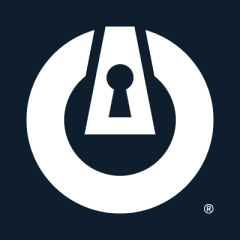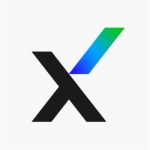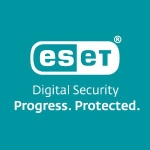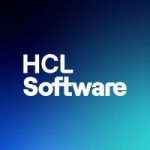What is our primary use case?
As a Managed Security Service Provider, we have numerous clients. We offer ThreatLocker's application whitelisting as a key component of our security stack, leveraging its capabilities as intended. For client-specific applications, we utilize learning mode to automatically whitelist them. Additionally, we employ global whitelisting for commonly used software such as QuickBooks, Sage, and other applications pre-configured by ThreatLocker. This proactive approach ensures seamless operation of essential enterprise applications.
How has it helped my organization?
For administrators, approving or denying requests is a straightforward process. They have three options available. The first is on-site with credentials. When a pop-up notification appears on the computer, an administrator can easily navigate through it, log in with their credentials, and approve the request. The second is a remote administrator. For administrators who work remotely and need to approve requests, an email will be sent to the ticketing queue. This notification allows them to access the tenant and approve the request from anywhere. The third is the mobile app. The top-level administrator and I can use a mobile app to approve requests on the fly, even while traveling. All three options are user-friendly and facilitate a smooth approval process.
The visibility is good. While it doesn't overwhelm users with information, ThreatLocker allows us to tailor the request message when approvals are needed. This means it's not just a generic notification. We can incorporate our branding and write a customized message containing relevant details. For example, in our case, the message would state, "Iowa Solutions is requesting this information." This approach helps avoid appearing malicious or unusual, promotes user comfort due to clear communication, and leverages name recognition to ensure users understand the request and its destination.
We use ringfencing when it's applicable. This can be a bit more challenging, particularly with certain global apps. Nevertheless, we utilize it to ensure that solutions without internet access requirements remain disconnected.
Our initial implementation of whitelisting applications did not seem to reduce the number of support tickets. It may have even generated slightly more. However, this was primarily an issue with the initial setup and the values have since returned to normal levels. The included Elevation module, however, has demonstrably reduced tickets, particularly once properly configured. While we are still experimenting with its optimal configuration, we are confident that it represents an internal process improvement rather than a product issue. The ThreatLocker solutions engineer we work with has guided us through this process. The product's ability to elevate already-approved applications directly addresses a significant source of tickets. We have streamlined operations and reduced support overhead by removing the need for end users to request administrator assistance for installing approved applications.
ThreatLocker has enabled us to effectively eliminate the risk of users introducing unauthorized applications into their environment. Occasionally, clients with on-premises IT teams or trusted individuals with administrative privileges might install software that they deem harmless. However, this software is often not part of the standard deployment or approved image, posing a potential security threat.
ThreatLocker serves as an additional layer of defense, ensuring that only authorized software is installed. For example, we have blocked and consolidated the installation of older Adobe versions, which may be vulnerable due to a lack of security updates. Similarly, when Adobe transitioned to a new licensing model, we prevented users from deploying older versions they might have had on hand, ensuring compliance and mitigating potential compatibility issues with the operating system or modern MSA-related items. One of the most common instances of unauthorized software installation involves printer drivers. Users may attempt to install specific drivers or software packages, which can introduce unwanted bloatware or adware. ThreatLocker effectively prevents this type of installation, ensuring a clean and secure environment. For example, if someone attempts to download Adobe Reader directly, the installer might attempt to bundle McAfee software. ThreatLocker efficiently blocks such bundled installations, preventing the introduction of unwanted adware.
We had already anticipated the benefits of ThreatLocker, and these benefits were subsequently confirmed in real-world scenarios. This prior knowledge solidified our understanding of the value it provides. We have a client who unfortunately fell victim to a compromised campaign that ThreatLocker would have prevented. This specific case serves as a compelling use case demonstrating the product's effectiveness. Notably, we were able to identify this value proposition quickly by reviewing the documentation and implementing ThreatLocker in our test environment. However, having a real-world example—where we can confidently state that ThreatLocker would have stopped the attack—further reinforces the product's potential value.
What is most valuable?
While it can be frustrating at times, we appreciate the low-level security provided by the application whitelist. Although incorrect implementation can lead to unintended blocking of desired applications, it serves as a crucial layer of defense against unauthorized activity. This whitelist effectively enforces established policies, ensuring minimal potential damage in the event of a malicious incursion.
What needs improvement?
This is our first time using whitelisting software in a production environment, so I can't speak from experience with other solutions. However, one of the main challenges we've encountered is that whitelisted applications can sometimes result in blocked requests, which disrupts workflows. If there's a way to mitigate these disruptions, it would significantly improve the end-user experience. While I don't have a specific solution in mind, I think ThreatLocker's current implementation is elegant. It allows users to customize what they see, submit a request, or simply exit without creating a ticket. This flexibility avoids forcing users to create tickets unnecessarily. While I think ThreatLocker is doing a good job overall, I believe the biggest pain point is the potential disruption to user workflows.
One area I see for improvement is in the visibility of support tickets within the ThreatLocker ticketing system. While my interactions with individual representatives and my solutions engineer have been excellent, communication through the ticketing system itself lacks transparency. Specifically, when an issue is escalated or marked as "being worked on," I'm not provided with any updates or information about the progress being made. This lack of visibility is frustrating, especially when dealing with complex issues that may take longer to resolve. While I understand that not every problem can be fixed in five seconds, I would like to see improved visibility in the ticketing system. This could be achieved by providing regular updates on the progress of tickets, particularly those that are older than three weeks. I appreciate the responsiveness and expertise of the individual support personnel I've interacted with, but enhanced visibility within the ticketing system would be a welcome improvement.
For how long have I used the solution?
I have been using ThreatLocker Protect for two years.
What do I think about the stability of the solution?
One of the recent tickets we opened resulted in stability issues for a very small population of deployed agents less than 0.1 percent. While the scale of the issue is minor and it only emerged recently, with a previously perfect stability record, it does represent a blemish on the otherwise excellent track record. I wouldn't allow this short-term problem to overshadow their previously pristine performance.
What do I think about the scalability of the solution?
I have not encountered any scalability issues.
How are customer service and support?
The technical support team is incredibly fast and efficient. Their live chat feature connects us directly with a support engineer, not an automated system or auto attendant. This direct connection is fantastic and ensures a swift resolution to your issue.
The accuracy of their solutions for common problems is impeccable, consistently exceeding 99 percent. While I've encountered some uncommon issues that required escalation to the development team, this is not a reflection of support's competence. It simply indicates an underlying product issue, not a support-related one.
The team's tier-one support engineers are exceptional, and the solutions engineer assigned to our account is equally impressive. They are both invaluable assets to the support side of the operation.
My only critique concerns the visibility of tickets that aren't resolved immediately. However, every time I've interacted with a support representative, they've been professional and helpful.
How would you rate customer service and support?
How was the initial setup?
We deployed the agents using our cloud-hosted RMM software, Ninja RMM. ThreatLocker provided us with a script to facilitate the deployment, making it incredibly easy. Management is also handled through the cloud portal, making the entire process cloud-exclusive and efficient for large-scale deployments.
I am involved in the initial deployment process for each newly onboarded client. The process is very straightforward, requiring only a few clicks and confirmation of the organization in the portal pop-up. Issues are extremely rare, and any encountered have been on our end during deployment, not with the product itself.
Deployment is typically a one-person job, especially for new clients. When we first launched the program, we had two people in the testing environment to ensure smooth execution. However, this included ThreatLocker integration, which required two additional key players: our account manager and solutions engineers. Therefore, the initial onboarding process involved two individuals, while subsequent client deployments required only one. This has proven sufficient to manage deployments without issues.
What about the implementation team?
We used an integrator who is the solution engineer assigned to our account and has been very helpful to this day. His involvement extended far beyond the initial 90-day onboarding period, and he remains heavily involved in our ongoing integration efforts. His contributions have been a true boon to our project's success.
What's my experience with pricing, setup cost, and licensing?
I believe ThreatLocker's pricing model is fair and flexible, allowing account managers to offer customized deals based on our specific needs. As a small company internally, we also appreciate the ability to scale our subscription easily to accommodate rapid growth periods, which are common for MSPs like ourselves. The tiered pricing structure based on devices is helpful, and the option to commit to specific modules in exchange for discounts is a valuable feature. Overall, I find their pricing fair and transparent, and I am impressed with their willingness to collaborate with us to achieve our goals.
What other advice do I have?
I would rate ThreatLocker Protect a nine out of ten.
Building trust in ThreatLocker's protection relies on the visibility of application requests, demonstrating that the product is actively working. However, this approach may not always achieve the desired outcome. Unfortunately, end users can perceive the constant prompts as a burden, hindering their workflow. While it's crucial to ensure that unauthorized applications are not running, these interruptions can erode trust unless users fully understand the security rationale. Instead of fostering confidence, the prompts can feel like roadblocks, obstructing users' ability to perform their tasks.
Our workflow has generally stayed the same with ThreatLocker. We were not looking for a solution that would save us time. We were looking for a robust whitelisting application software.
End users may not always consider the potential consequences of their actions. As security advisors, it's our responsibility to educate them on safe online practices. Downloading files from unknown sources, clicking links in suspicious emails, and entering passwords carelessly are all risky behaviors. Our "Know Before" training program specifically addresses these vulnerabilities through interactive phishing simulations and social engineering exercises. While some users might find this mandatory training disruptive, it's crucial for building awareness and mitigating cybersecurity risks. Security professionals can't afford to remain passive. While a silent, background approach might be ideal, the reality is that active intervention is often necessary. The end user is dangerous and just like a guardian watching over a child crossing the street, ThreatLocker offers an extra layer of protection, preventing users from making critical mistakes.
Users need to be aware that this feature will bring security to the forefront for them. This visibility is not a negative aspect, but rather a positive one, as it increases user awareness. However, it's important to remember that sometimes even tech professionals and security analysts cannot anticipate how users will think or react. So, it's essential to avoid approaching the situation from a purely technical or analytical perspective, and instead strive for a balanced and grounded approach. Be mindful of the increased visibility and leverage ThreatLocker's exceptional support team. They have likely encountered any unique situations we might encounter and can guide us through the implementation process.
Which deployment model are you using for this solution?
Public Cloud
Disclosure: PeerSpot contacted the reviewer to collect the review and to validate authenticity. The reviewer was referred by the vendor, but the review is not subject to editing or approval by the vendor. The reviewer's company has a business relationship with this vendor other than being a customer: MSP





















